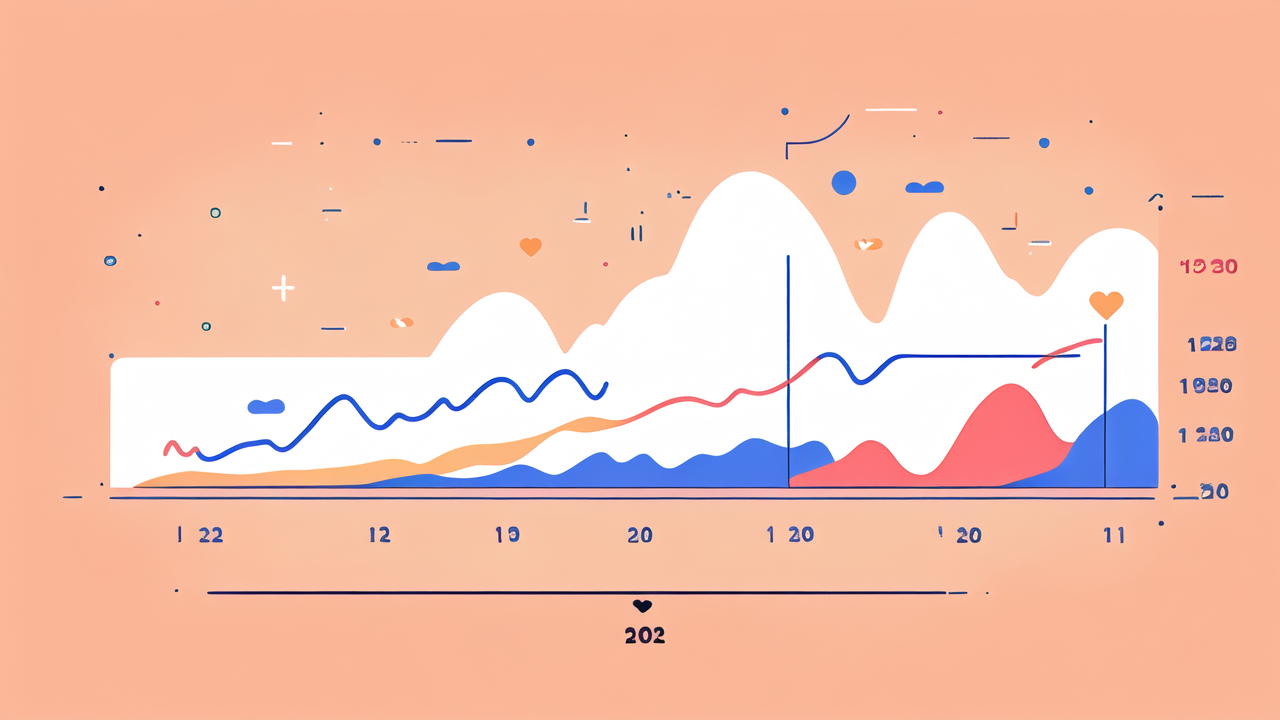Understanding the Evolution of the Pulse Watch Market
The History of Pulse Watches: From Niche to Mainstream
Pulse watches have come a long way since their inception. They started as niche devices for athletes. Now, they're mainstream gadgets for health-conscious consumers. The journey began in the 1970s with simple heart rate monitors. These early models were bulky and not very accurate.

As technology improved, so did pulse watches. They became smaller, more precise, and easier to use. The 1980s saw the first wireless heart rate monitors. This was a game-changer for athletes and fitness enthusiasts. By the 2000s, pulse watches started to include more features. They could track steps, calories burned, and sleep patterns.
Today, pulse watches are smart devices. They can connect to smartphones and offer a wide range of health metrics. The evolution of pulse watches reflects our growing interest in personal health data.
Technological Advancements in Wearable Technology
Wearable technology has seen rapid advancements in recent years. Pulse watches now use advanced sensors to track various health metrics. These include heart rate, blood oxygen levels, and even ECG readings. The accuracy of these devices has improved dramatically.
Many pulse watches now use AI to provide personalized insights. They can detect irregular heart rhythms and alert users to potential health issues. Some models even offer stress management features. They use heart rate variability to measure stress levels.
Battery life has also improved significantly. Many pulse watches can now last for days or even weeks on a single charge. Waterproofing has become standard, allowing users to wear their devices while swimming.
The integration with smartphones has expanded the capabilities of pulse watches. They can now display notifications, control music, and even make payments.
Market Growth: Stats and Projections for Pulse Watches
The pulse watch market has seen impressive growth in recent years. In 2020, the global smartwatch market was valued at $19.2 billion. It's projected to reach $96.31 billion by 2027. This represents a compound annual growth rate (CAGR) of 19.6%.
Pulse watches are a significant part of this market. They're popular among fitness enthusiasts and health-conscious consumers. The COVID-19 pandemic has accelerated this growth. More people are now interested in monitoring their health at home.
North America currently leads the market. However, Asia-Pacific is expected to see the fastest growth. This is due to increasing health awareness and rising disposable incomes in countries like China and India.
The market is also seeing a trend towards more affordable options. This is making pulse watches accessible to a wider range of consumers.
Key Players and Innovations in the Pulse Watch Industry
Leading Brands in the Pulse Watch Market
Several brands dominate the pulse watch market. Apple leads with its Apple Watch series. Fitbit, now owned by Google, is another major player. Garmin is popular among serious athletes. Samsung offers strong competition with its Galaxy Watch line.

Other significant brands include:
- Huawei
- Xiaomi
- Fossil
- Withings
- Polar
Each brand has its strengths. Apple excels in overall smartwatch features. Fitbit focuses on fitness tracking. Garmin is known for its advanced sports features. Samsung offers a good balance of smartwatch and fitness features.
These brands continue to innovate and compete for market share. They regularly release new models with improved features and designs.
Innovations in Pulse Watch Features and Design
Pulse watch innovations are happening at a rapid pace. Many new features focus on advanced health monitoring. Some watches can now measure blood pressure and blood oxygen levels. Others can detect falls and automatically call for help.
Design innovations are making pulse watches more attractive and comfortable. Many now offer customizable watch faces and interchangeable bands. Some brands are experimenting with flexible displays that wrap around the wrist.
Battery life is a key area of innovation. New low-power displays and more efficient processors are extending battery life. Some watches now offer solar charging to further extend battery life.
Voice assistants are becoming more common in pulse watches. They allow users to control their devices hands-free. This is particularly useful during workouts.
Startups and Up-and-Comers: The Future of Wearables
While established brands dominate the market, startups are driving innovation. These companies are exploring new ways to use wearable technology. Some focus on specific health conditions. Others are developing new types of wearable devices.
One startup, Ōura, has gained attention with its smart ring. It tracks sleep and activity without looking like a traditional watch. Another, Whoop, offers a subscription-based fitness tracker. It focuses on recovery and strain metrics for athletes.
Other interesting startups include:
- Biostrap: Focuses on clinical-grade health monitoring
- Moodbeam: Tracks mood and wellbeing
- Levels: Monitors blood glucose levels in real-time
These startups are pushing the boundaries of what wearable technology can do. They're likely to influence the future direction of the pulse watch market.
Strategic Insights for the Pulse Watch Market
Consumer Behavior and Trends in Wearable Technology
Consumer behavior in the wearable technology market is evolving. Health and fitness remain the primary drivers of pulse watch adoption. However, users are now looking for more comprehensive health monitoring.

There's a growing interest in sleep tracking and stress management features. Consumers want devices that can provide actionable insights, not just raw data. They're also increasingly concerned about data privacy and security.
Customization is becoming more important. Users want devices that reflect their personal style. They also want the ability to choose which features to use and which data to track.
Integration with other devices and services is a key trend. Consumers expect their pulse watches to work seamlessly with their smartphones, smart home devices, and health apps.
The Impact of Regulations and Health Policies on Pulse Watches
Regulations and health policies are shaping the pulse watch market. In many countries, these devices are now considered medical devices. This means they must meet certain standards for accuracy and safety.
The FDA in the US has created a framework for regulating digital health technologies. This includes many features found in pulse watches. The EU's Medical Device Regulation also affects pulse watches sold in Europe.
These regulations can be challenging for manufacturers. However, they also provide opportunities. Devices that meet medical standards can be marketed as more trustworthy and reliable.
Health policies are also driving adoption of pulse watches. Some insurance companies now offer incentives for using these devices. This is part of a broader trend towards preventative healthcare.
Marketing Strategies for Success in the Wearable Tech Space
Successful marketing in the wearable tech space requires a multi-faceted approach. Brands need to highlight both the health benefits and the lifestyle appeal of their devices.
Education is key. Many consumers are still unfamiliar with the full capabilities of pulse watches. Brands need to explain how their devices can improve health and fitness.
Partnerships with healthcare providers and fitness professionals can be effective. These can lend credibility to a brand's health claims.
Personalization is important in marketing messages. Different features will appeal to different demographics. Athletes might be interested in advanced training metrics. Older users might focus on health monitoring features.
Social media influencers can be powerful advocates for pulse watches. They can demonstrate how these devices fit into an active, healthy lifestyle.
Offering a ecosystem of apps and services can be a strong selling point. This can help users get more value from their devices and increase brand loyalty.




Leave a comment
This site is protected by hCaptcha and the hCaptcha Privacy Policy and Terms of Service apply.